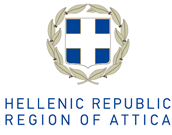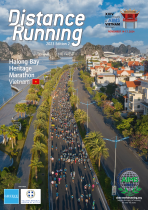Opinion
01 July 2013, 7am
Thinking of the children
*How did you first get involved with the AIMS Children's Series?*
When AIMS was seeking a partner to co-ordinate the Children’s Series in Tanzania. I was approached by an associate with whom AIMS Secretary Hugh Jones had discussed the project. When he outlined the idea to me, I was immediately interested, and agreed to co-ordinate the event on behalf of AIMS.
What is your professional background? Had you been involved in organizing other sports or community projects?
I am a former banker, but I currently own stakes in a few companies including INFOSOL TANZANIA which coordinated the Children’s Series for AIMS. INFOSOL has a PR Department which covers event management.
What appealed to you about this particular project?
I love working with children and it was gratifying to see an international organisation adding value to childrens’ experiences. This was important because running is a universal sport that has had little attention paid to it in Tanzania, unlike football. It deserves better, and I wanted to be part of that.
How much freedom did you have to realise the Children’s event as you wanted? Was there a particular format to follow?
AIMS have their requirements such as equal treatment of boys and girls, and the need to define age groups and race distances, but there was flexibility. In our case we had under 17s and under 13s for both boys and girls and the distance was 5km for the under-17s and 3km for the under 13s.
Beyond that INFOSOL was free to choose the venue, time and date of the race, additional activities and local sponsorship – although we did not have any.
Did you have to get others involved in order to help you to organise the races?
INFOSOL had a team well trained for any event but we had to coordinate with sports teachers of each school involved as they had to train for the event and registration.
Whose support did you need to put the event on? What was their attitude to what you were asking of them?
It was amazingly easy to get support from the local authorities, everyone loved the idea, wanting to know more about AIMS and what more they could do to participate. The main support we needed was from the District Sports and Culture Officer who is in charge of all matters in relation to sport. She is the one who recommends the particular activity to the Regional Director for approval. The District Sports and Culture Officer then wrote to all the Government schools in the area in question, introducing INFOSOL as coordinators of the event and instructing the school sports teachers to give us all the support we needed.
How long did it take you to put together the first event? Was it easier for the ones that followed?
With the funding in place, we were confident that everything else would fall into place. I remember that for the first event we had to make extra efforts to ensure that everything went as planned but for the second and third events we put more effort into adding extra excitement for the kids. For the second series we added a buffet lunch for all the participants and the first three in each group were provided with sports gear (track suit, shorts and running vest) and the same effort was made in the third year. The second and third series were a walk in the park. I could sense that every member of the organising team was actually having fun – not just the kids.
Did you need to have traffic control in order to run the races?
I would like to thank the police force (traffic division) very much for the support they provided. In all three of the series we held they gave us their undivided attention and co-operation. The traffic police was requested to assist INFOSOL during the event by the District Sports and Culture Officer in writing. The police stopped traffic when needed for as long as required. In the last race it created quite a traffic jam in the Chalinze area.
How did the children react to running a race?
The children loved the series; they were very excited. As I said earlier running does not get the attention it deserves in Tanzania. Kids are only used to football. Athletics does not get so many such opportunities. One very common question the kids asked was, “When are you coming back next year?” For some reason they were expecting an on-going annual event.
Not every child involved was serious about running as a career – some were just having fun – but we came across a good number of runners that took it so seriously that they wanted advice from INFOSOL about how they could pursue running as a career. We are not in a position to provide professional advice apart from suggesting they ask their sports teachers. Since then INFOSOL has been contacted several times by sports teachers seeking assistance in one way or another. I remember asking if AIMS could sponsor more races.
Did you have any ceremony after the races?
After the race kids were provided with refreshments, food was only provided in the second series because for that one we recruited only from orphanage schools.
All the children got a medal and a T-shirt from AIMS and we gave refreshments and arranged a small ceremony. Every participant gathered around the main table where we invited the heads of schools and some local authority figures to come and witness the event. They were asked to hand out the medals. Then the first three to finish in each group were called to come up to collect the additional winners’ gift of sports gear. They were greeted by crowd cheers; it was clear to me that their talent was appreciated.
What impact do you think the events had on the organisations you approached?
AIMS and INFOSOL will be remembered by all the authorities we worked with, especially the office of the District Sports and Culture Officer. They have already asked INFOSOL if there will be another event coming and we have already told them it is time for other countries to get the opportunity.
Do you think any of these institutions would consider putting on similar races themselves in the future?
There are annual races organized by the Regional Sports and Culture Department under the Regional Commissioner’s Office, which involve every school in the ward, district, region then national level.
Do you have any advice for AIMS in how they should manage the Series in future?
My advice would be to ask sponsors to provide additional running gear. In Africa a lot of kids live below the poverty line. That’s why most of them involved in these races were running barefoot. How do you expect them to have fair training opportunities when they can’t even afford running gear? You know what a kid like that needs to become a professional runner. Secondly, considering these events take place only once a year and each time in a different location, AIMS should ask sponsors to provide more funding for a bigger event so as to make sure kids retain this memory for a very long time. As it is, any kids who participated in the event, unless they are fortunate enough to progress through other means, will have a short memory of these events. They will have happened only once during their seven years in school.







